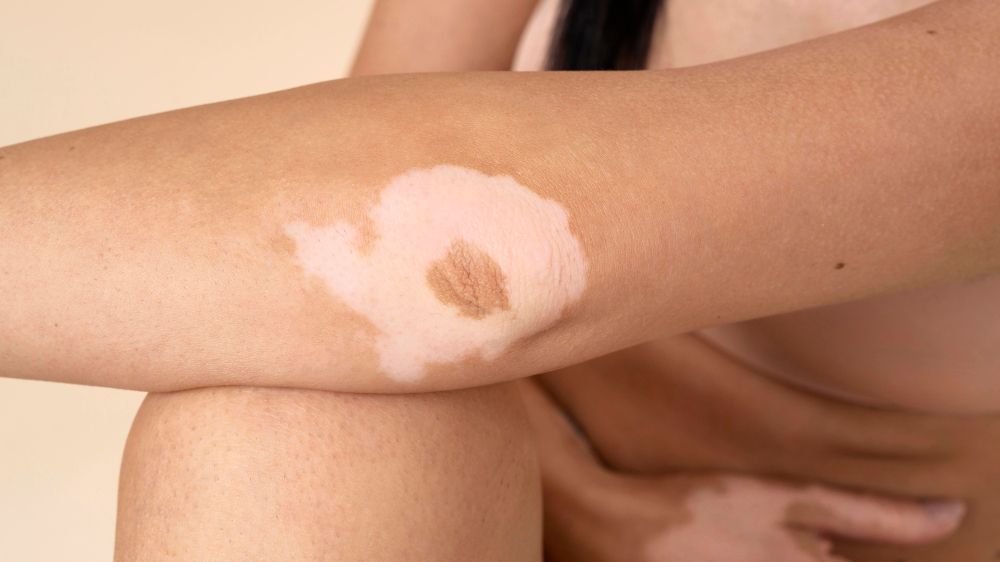Healthcare professional?Get new patients, boost visibility, and automate 24/7 bookings! 100% free.*
Request access nowArticle
Explore the world of vitiligo, a chronic skin condition causing the loss of pigmentation and the emergence of white patches. Learn about its causes, symptoms, and the latest treatments to manage this condition that affects 2 to 4% of the global population, with a higher prevalence among black and brown races.
The exact cause of vitiligo remains elusive, but it's widely regarded as an autoimmune disease. In simple terms, the body's immune system mistakenly attacks its pigment-producing cells, responsible for the skin's coloration. Genetic factors play a role, making those with a family history more susceptible. Additionally, environmental triggers such as exposure to UV radiation and certain chemicals heighten the risk. Individuals with thyroid disorders, like hypothyroidism or hyperthyroidism, may also find themselves more prone to vitiligo.
The hallmark symptom of vitiligo is the appearance of white patches on the skin, often concentrated on the face, hands, arms, and legs. These patches, varying in size and shape, can impact one's appearance and, in some cases, are accompanied by heightened sensitivity to sunlight, skin dryness, and itching.

While a definitive cure remains elusive, various treatments aim to alleviate the visibility of white patches. Topical treatments, including creams and gels with corticosteroids or calcineurin inhibitors, offer localized relief. Phototherapy, involving exposure to UV radiation, either alone or coupled with topical applications, has shown efficacy in managing vitiligo. For more extensive cases, skin grafting, a procedure transplanting healthy skin to affected areas, provides an effective solution.
Stay informed about the latest breakthroughs in vitiligo research. Scientists are exploring cellular therapies, aiming to replace lost pigment-producing cells, and genetic therapies targeting anomalies contributing to vitiligo development. These promising avenues may pave the way for more effective treatments in the future.
Vitiligo is more than a skin condition; it's a part of individuals' lives, impacting their quality of life. While a cure remains elusive, existing treatments offer hope in minimizing the appearance of white patches. Ongoing research, fueled by organizations like the World Health Organization, aims to uncover more effective solutions, offering a brighter future for those affected by vitiligo.